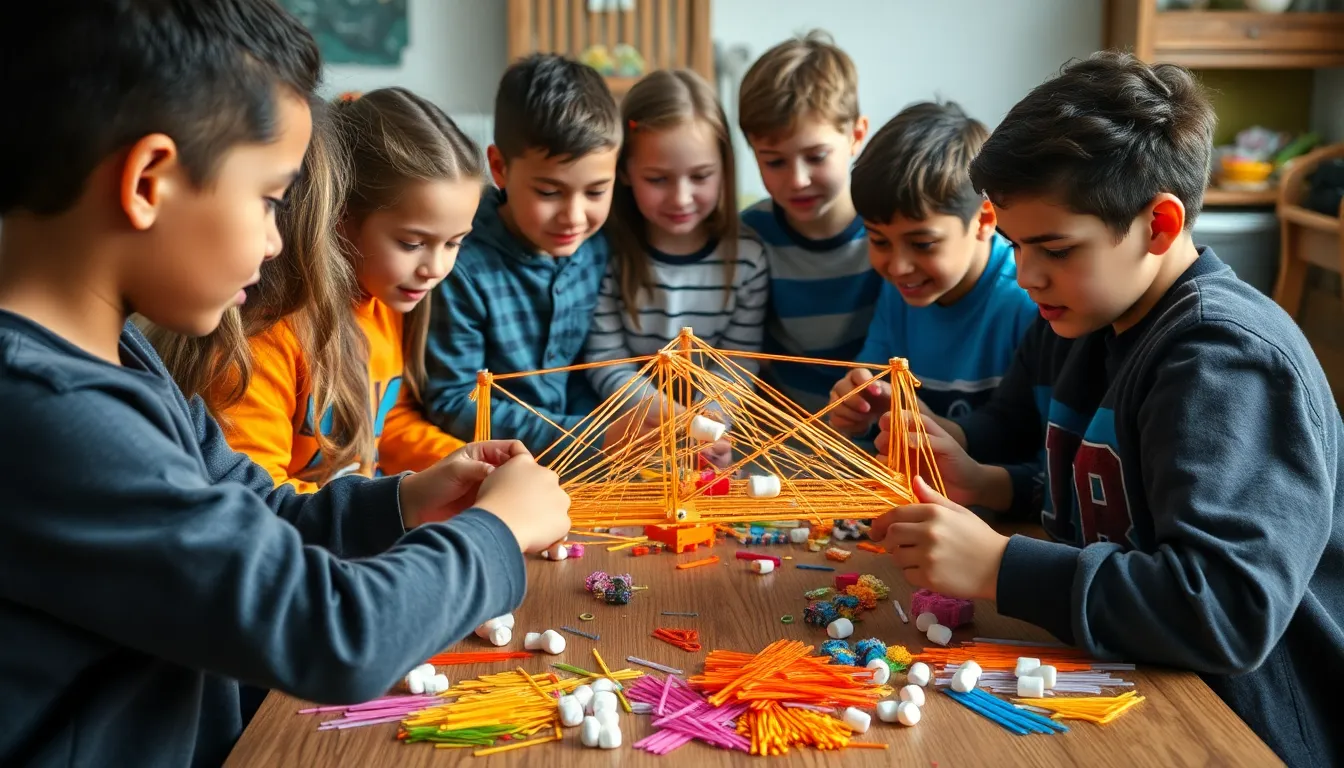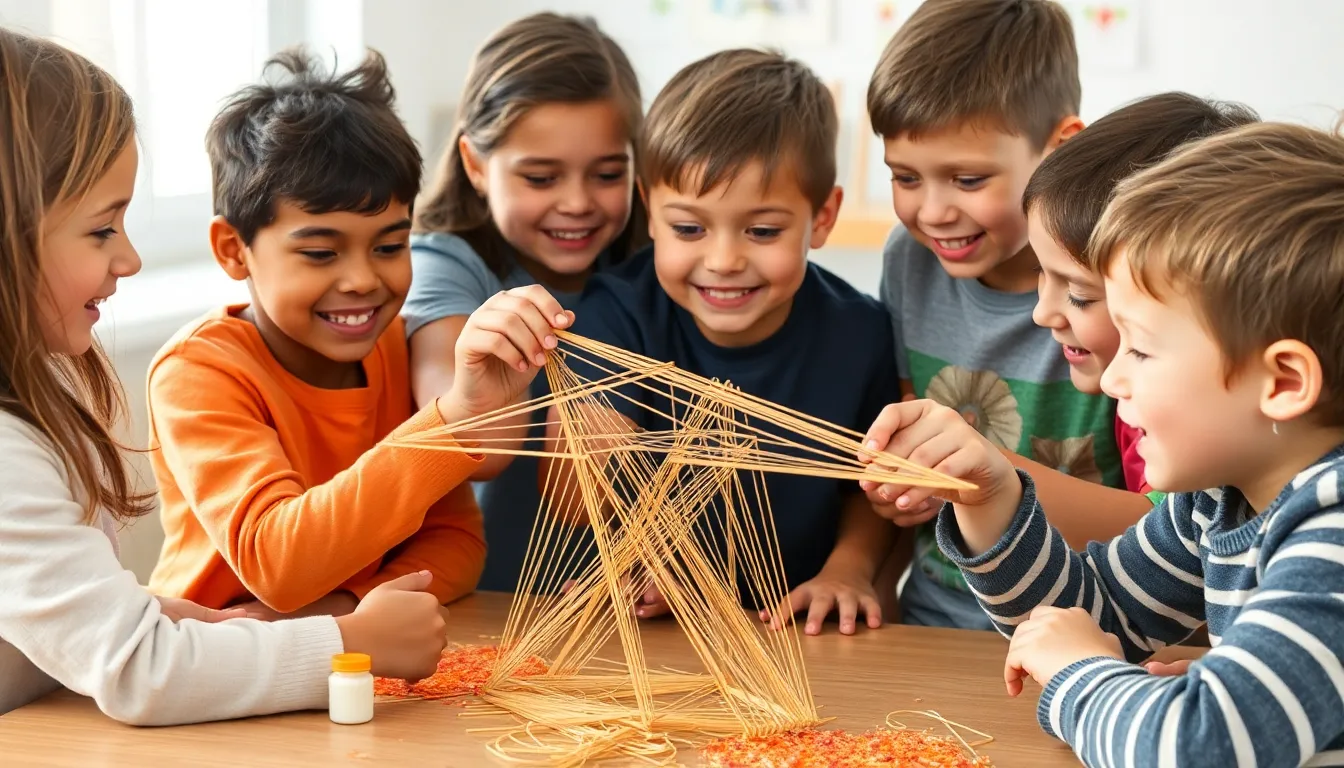In a world where innovation drives progress, introducing kids to engineering challenges can spark their creativity and problem-solving skills. These hands-on activities not only make learning fun but also lay the groundwork for future careers in science, technology, engineering, and mathematics (STEM).
By engaging in engineering challenges, children learn to think critically and work collaboratively. Whether it’s building a bridge from spaghetti or designing a simple machine, these projects encourage experimentation and resilience. As they tackle real-world problems, kids discover that failure is just a stepping stone to success, making the journey of discovery all the more rewarding.
Table of Contents
ToggleOverview of Engineering Challenges for Kids
Engineering challenges encourage kids to think critically and creatively. These activities involve real-world problems, integrating fun with learning. Engaging in projects such as building bridges from spaghetti or creating simple machines boosts collaboration and communication skills.
Kids learn to approach problems methodically. They identify parameters, brainstorm solutions, and test their ideas. Success builds confidence, while failures provide invaluable lessons. Each challenge becomes an opportunity for exploration and discovery.
Hands-on engineering challenges can take various forms:
- Bridge Building: Using materials like spaghetti or popsicle sticks, kids design and construct bridges, learning about weight distribution and structural integrity.
- Rube Goldberg Machines: Kids create complex machines that accomplish simple tasks, promoting understanding of mechanics and cause-and-effect relationships.
- Robotics Kits: Engaging with robotics introduces programming skills and the principles of automation, helping kids grasp the basics of engineering and technology.
- LEGO Challenges: Constructing different structures with LEGO fosters creativity and spatial awareness, allowing kids to implement their ideas in a tangible format.
Participating in these challenges equips kids with essential skills and inspires a passion for engineering.
Benefits of Engineering Challenges


Engaging in engineering challenges offers numerous advantages for kids, promoting essential skills and enhancing their learning experiences. Through these activities, children develop cognitive abilities that set the foundation for their future.
Critical Thinking Skills
Engineering challenges require kids to analyze problems and devise innovative solutions. These tasks teach them to assess various factors, prioritize information, and make informed decisions. For instance, while designing a bridge from spaghetti, kids explore concepts like stability, weight distribution, and structural integrity. They learn to approach obstacles with logical reasoning, encouraging them to question assumptions and evaluate alternatives. Such critical thinking skills foster resilience, enabling children to adapt and thrive in uncertain situations.
Collaboration and Teamwork
Many engineering challenges involve group participation, enhancing collaboration and teamwork. Kids work together to brainstorm ideas, assign roles, and share responsibilities. Through activities like building Rube Goldberg machines, they experience the dynamics of cooperation, communication, and compromise. These experiences teach children the value of diverse perspectives and the importance of listening to others. As they connect with peers, they cultivate social skills that are crucial for their academic and professional futures.
Types of Engineering Challenges
Various types of engineering challenges inspire children to engage in creative thinking and develop practical skills. These activities enhance problem-solving abilities while making learning enjoyable.
Simple Design Projects
Simple design projects encourage kids to explore basic engineering concepts through hands-on activities. Examples include creating catapults using popsicle sticks, designing paper airplanes, or building structures from recycled materials. These projects teach fundamentals like stability and balance. Inclusive lessons on materials help children understand their physical properties and optimal uses. Simple design projects not only foster creativity but also boost confidence as kids see their ideas come to life.
Problem-Solving Activities
Problem-solving activities challenge kids to tackle real-world issues through engineering principles. Engaging in activities like building a sturdy bridge with limited materials or designing a vessel that floats enhances critical thinking and innovation. These challenges require children to identify constraints, apply scientific methods, and iterate on designs. Encouraging collaboration during these activities promotes teamwork, communication, and respect for different viewpoints. Each successful solution reinforces persistence and adaptability, crucial traits for future endeavors in STEM fields.
Tips for Implementing Engineering Challenges
Implementing engineering challenges effectively requires consideration of age-appropriate activities and accessible resources. Focus on engaging children at their level to maximize interest and learning potential.
Age-Appropriate Activities
Engaging children with age-appropriate activities ensures they build confidence while exploring engineering concepts.
- Preschool (Ages 3-5): Simple tasks like building with large blocks or stacking soft materials, such as foam shapes, introduce foundational concepts of balance and stability.
- Early Elementary (Ages 6-8): Create challenges like designing a marble run or constructing a simple catapult. These activities encourage creativity and basic physics understanding.
- Middle Elementary (Ages 9-12): Incorporate more complex projects such as bridge-building with various materials or designing Rube Goldberg machines. Kids in this age group can grasp engineering principles like forces and motion.
- Teenagers (Ages 13+): Encourage robotics projects and coding challenges. At this stage, students can tackle sophisticated programming concepts and mechanical design, preparing them for future STEM careers.
Resources and Materials
Gathering the right resources and materials supports engaging and effective engineering challenges.
- Building Materials: Use items like LEGO bricks, recycled cardboard, and popsicle sticks. These materials allow for versatile project creation, from simple structures to intricate designs.
- Digital Tools: Utilize software like CAD programs for older students. These tools introduce design principles through digital platforms.
- Workshops and Kits: Consider engineering kits or local workshops that provide hands-on experience. Organizations like STEM education centers often offer programs tailored to various age groups.
- Online Platforms: Access educational resources through platforms such as Khan Academy or NASA’s educational materials. These provide additional support, tutorials, and ideas for engineering challenges.
Implementing engineering challenges with a focus on age-appropriate activities and accessible resources lays the groundwork for enjoyable and educational experiences in STEM fields.









